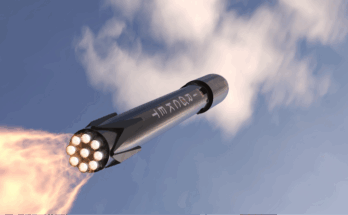by Dan Darling, International Military Markets Analyst, Forecast International.
The Indian Navy’s pressing requirement for modern mine countermeasures vessels (MCMVs) continues to take a back seat to bureaucratic bungling, “Make in India” industrial offset requirements, and pushback from South Korean shipbuilder Kangnam.
The long, winding, and often byzantine government approach to tendering procedures and technical negotiations continues to plague India’s military modernization process at a time when the nation faces a gathering threat in its backyard from China’s naval expansion and penetration into the Indian Ocean Region (IOR).
A decision by the government to scrap the INR328.4 billion ($5.18 billion) tender and locally build 12 MCMVs under a collaborative arrangement with Kangnam as the original equipment manufacturer (OEM) represents just the latest misstep in a long string of failed launches and incomplete projects by the Indian Defence Ministry.
Most worrisome for the Indian Navy is that it needs the new mine-warfare ships to guard the nation’s vital sea lines of communication at a time when the growing submarine arm of the Chinese People’s Liberation Army Navy (PLAN) is increasingly conducting forays into India’s regional waters. These nuclear and conventional submarines are capable of laying mines.
With the Indian Navy’s lone minehunter capability – half a dozen badly aging Soviet-legacy Pondicherry class models acquired between 1978 and 1988 and which are slated for retirement by 2020 – dwindling, the service is being charged with taking on an area of responsibility for which it is stretched to capacity and increasingly ill-equipped to tackle.
Over 90 percent of India’s foreign trade volume arrives via the sea, thus making protection of the country’s strategic waters and its vast 7,500-kilometer coastline paramount.
Yet India’s many naval programs continue to suffer delays at a time when the PLAN is adding more surface warfare ships and submarines to its ever-growing inventory.
At the start of last year, the Indian Navy featured 140 warships, most of them aging or in obsolete condition. With some 46 warships (including an aircraft carrier, seven frigates, six destroyers, and five to six submarines) currently on order or under construction at domestic shipyards, there is a pressing need for the Indian Navy to add both capacity and capability in order to counter China’s push into the IOR and exercise greater control over its own maritime domain.
This is occurring at the same time that the Indian government’s strategic industrial focus is on using domestic sources for more of its military hardware under its “Make in India” indigenization initiative. This in turn puts competing pressure on the Navy’s requirement to add a considerable quantity of capable, modern naval warships by slowing down the process by which such projects are contracted for and built. Rather than simply buying directly from a foreign vendor in order to ensure faster delivery and proven capability, the Indian government instead favors a lengthy, complicated process whereby it may (or may not) acquire foreign know-how while simultaneously growing its own military technological-industrial base.
In the case of the MCMV project, the procurement procedure being utilized is “Buy and Make (Indian),” which involves the purchase of an existing design from a foreign OEM under a tie-up with a local Indian vendor, who will then produce the vessel under license. The arrangement also includes the requisite transfer of technology from the OEM to the Indian vendor.
This latter requirement is the point where the MCMV negotiations broke down as Kangnam balked at the demand of the Indian Ministry of Defence that the ships’ complete intellectual property rights be transferred to state-owned Goa Shipyard Ltd, the local shipyard tasked with the project. With Kangnam requiring deviations from the original Request for Proposal (RFP), the Indian government opted to forego further commercial negotiations with the South Korean shipyard and instead direct Goa Shipyard to issue a new global expression of interest (EOI) for the MCMVs, with a fresh tender to follow later.
The problem, however, is that having the MCMV project rebooted for the third time since 2008 means that the entire process – from RFP issuance to finalizing a contract to serial ship production and the delivery of ships into operational service – will now take up to 10 years. In the meantime, the Indian Navy will be left with just four Pondicherry class MCMVs considered worthy of upgrade and retention out to 2020 and (now) beyond.
The Indian Navy’s total requirement is for 24 new MCMVs, and the new EOI – to be issued once again to Kangnam, as well as Italy’s Intermarine and other foreign shipyards specializing in production of minehunting vessels – will involve just 12 first-batch vessels. With just half the needed capacity to meet the PLAN’s expansive push into the Indian Ocean Region, India’s Navy will be rendered extremely shorthanded as the Ministry of Defence wastes crucial time haggling over ship designs and technology transfer agreements.
For a nation that has traditionally opted for an approach of strategic nonalignment, the current lack of crucial capabilities for safeguarding its home waters is alarming – and may ultimately necessitate closer naval arrangements with like-minded allies in order to plug gaps until New Delhi exercises enough political will to move its glut of stalled military modernization projects forward.
Please feel free to use this content with Forecast International and analyst attributions, along with a link to the article. Contact Ray Peterson at +1 (203) 426-0800 or via email at ray.peterson@forecast1.com for additional analysis.
The Forecast International International Military Markets series examines the military capabilities, equipment requirements, and force structures inventories of 140 countries, with corresponding coverage of the political and economic trends shaping the defense market outlook for individual countries and regions.
For 50 years, Forecast International intelligence reports have been the aerospace and defense industry standard for accurate research, analysis, and projections. Our experienced analysts compile, evaluate, and present accurate data for decision makers. FI's market research reports offer concise analysis of individual programs and identify market opportunities. Each report includes a program overview, detailed statistics, recent developments and a competitive analysis, culminating in production forecasts spanning 10 or 15 years. Let our market intelligence reports be a key part of reducing uncertainties and mastering your specific market and its growth potential. Find out more at www.forecastinternational.com



